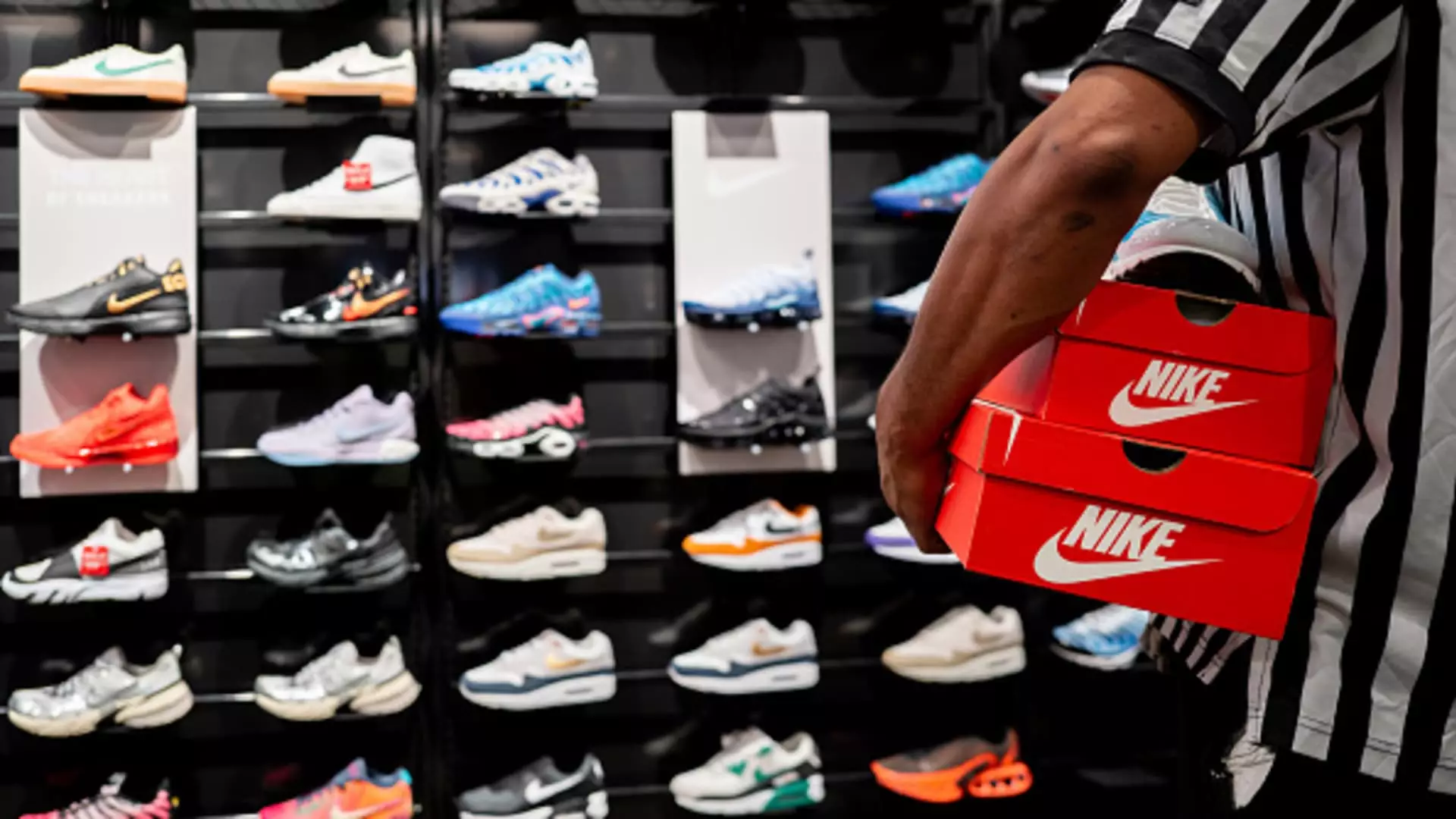As Nike prepares to release its quarterly earnings report, the air is thick with apprehension among investors. Scheduled for Tuesday, this announcement comes at a crucial juncture for the world’s premier athletic footwear and apparel brand. Over the past few months, Nike has faced a slew of hurdles, and the forthcoming fiscal first quarter report for 2025 is anticipated to reflect the dire state of its financial health. Analysts predict earnings per share (EPS) at 52 cents, with revenue forecasted at a staggering $11.65 billion—a decline of approximately 10% compared to the same period last year. Profits, too, are projected to plummet by nearly 45%, casting a long shadow over the brand’s future.
Adding to the uncertainty, Nike announced in September that its CEO, John Donahoe, would soon step down. His replacement, Elliott Hill—a long-time Nike veteran—will take on the leadership role, aiming to steer the company during its transitional phase. Donahoe’s leadership era saw annual sales increase by over 31%. However, growth largely stemmed from established franchises, such as Air Force 1s and Dunks, rather than pioneering new styles that drive brand evolution.
Under Donahoe, efforts to bolster innovation seemed sluggish, as the company concentrated on direct-to-consumer sales through its websites and retail outlets, ultimately sidelining traditional retailers like Foot Locker and DSW. The decision to elevate Hill as the new CEO reflects the board’s desire for someone with intimate knowledge of the brand to navigate its next chapter, especially in light of claims that Nike is losing its competitive edge. Both investors and industry observers will be keenly watching whether Hill can infuse fresh ideas and invigorate the innovation pipeline, which has stagnated in recent times.
Nike’s challenges are compounded by the broader economic landscape, particularly in the U.S., where the sneaker market appears lackluster. Consumer spending on discretionary items, including footwear and apparel, has slowed considerably. Reports indicate that U.S. footwear sales are projected to rise a meager 2% in 2024, following a period of stagnation from 2022 to 2023. Athletic footwear might fare somewhat better with an expected growth of about 5.6%, yet this is still far from the robust growth that Nike might need to remain dominant.
This sluggish demand underscores a significant shift in consumer behavior that Nike must acknowledge and adapt to. As preferences evolve, brands that neglect innovation or fall behind in meeting changing consumer desires risk alienating their customer base. As such, the stakes are high for Hill, who must reignite the spark of innovation that once characterized Nike.
Another crucial facet is Nike’s performance in international markets, particularly in China, which stands as the company’s third-largest market. Recent warnings from Nike point to a weakened economic climate in Asia, exacerbated by increased competition and changing consumer habits. However, glimmers of hope may arise from recent stimulus measures enacted by China’s central bank, signaling a possible recovery for the beleaguered economy.
While Nike’s fiscal first quarter concluded before these stimulus measures took effect, the executives may offer insights into how sales are trending as the market adjusts. Positive developments in China could prove pivotal for Nike’s overall bottom line. However, the key question remains whether these potential economic benefits will be reflected in the upcoming earnings report.
As the earnings release approaches, investor sentiment is fraught with apprehension. Nike’s shares closed at $88.40 on Monday, down roughly 19% in 2024—an alarming divergence compared to the S&P 500’s approximate 21% gains. Such underperformance raises concerns about Nike’s viability in a highly competitive market, prompting questions about its capacity to innovate and rebuild relationships with wholesalers.
As the company enters this critical period, the outcome of the upcoming earnings report could serve as a barometer for stakeholders. Will Hill be able to leverage his extensive experience with Nike to navigate these tumultuous waters? The resolution of these questions will help shape the future trajectory of a brand that has long stood as a pillar of the athletic footwear industry. With an eye on transformation, Nike’s next steps could determine its capacity for reinvention and lasting success.

